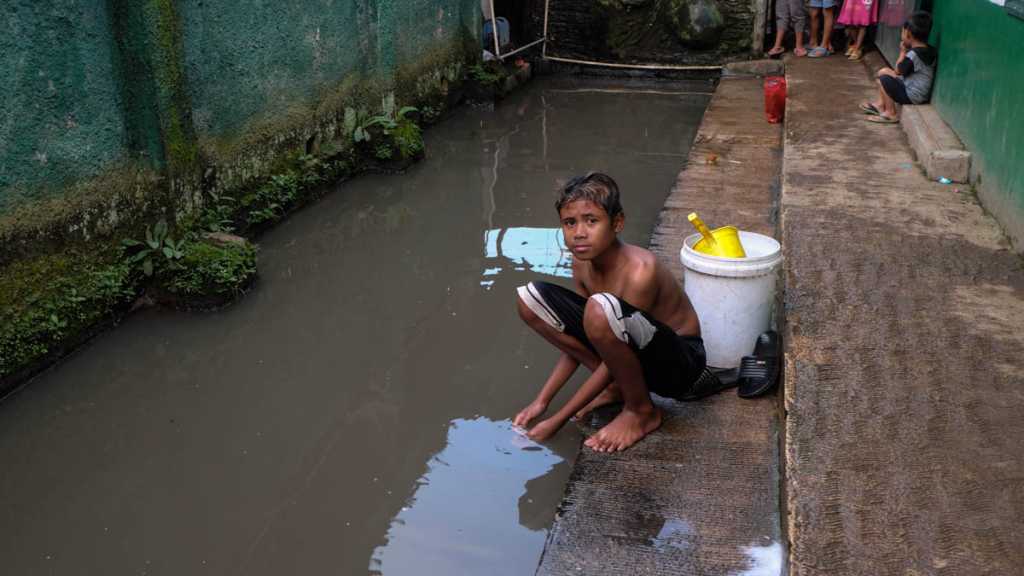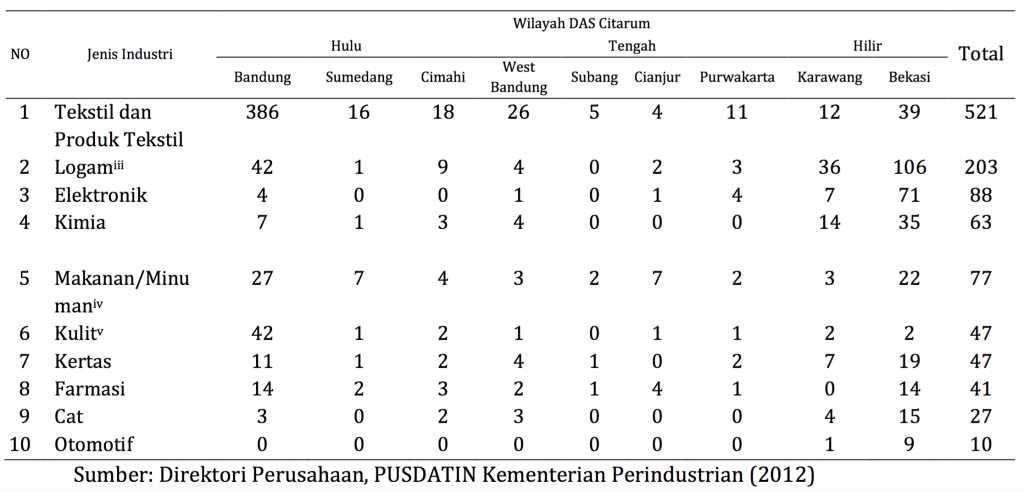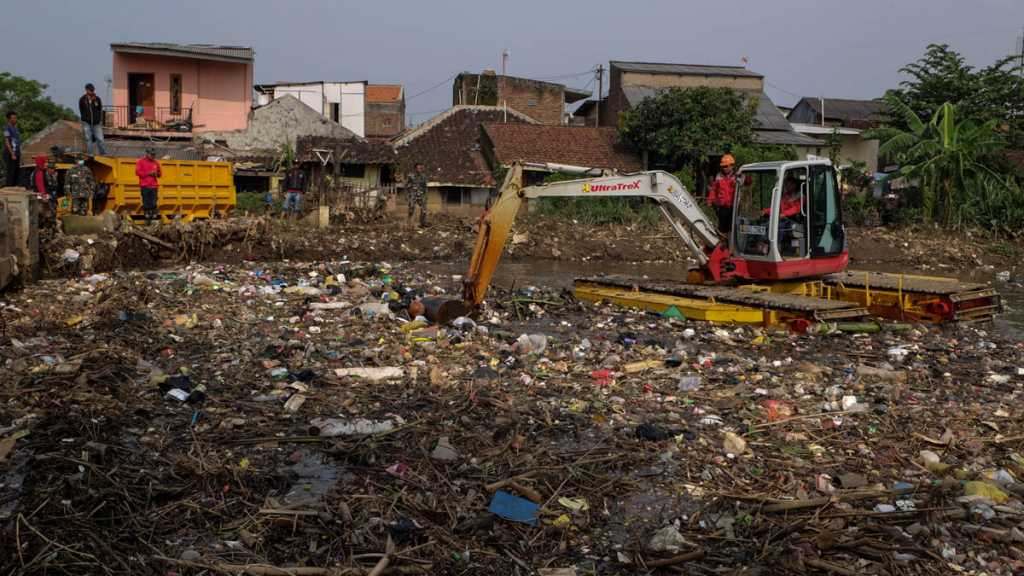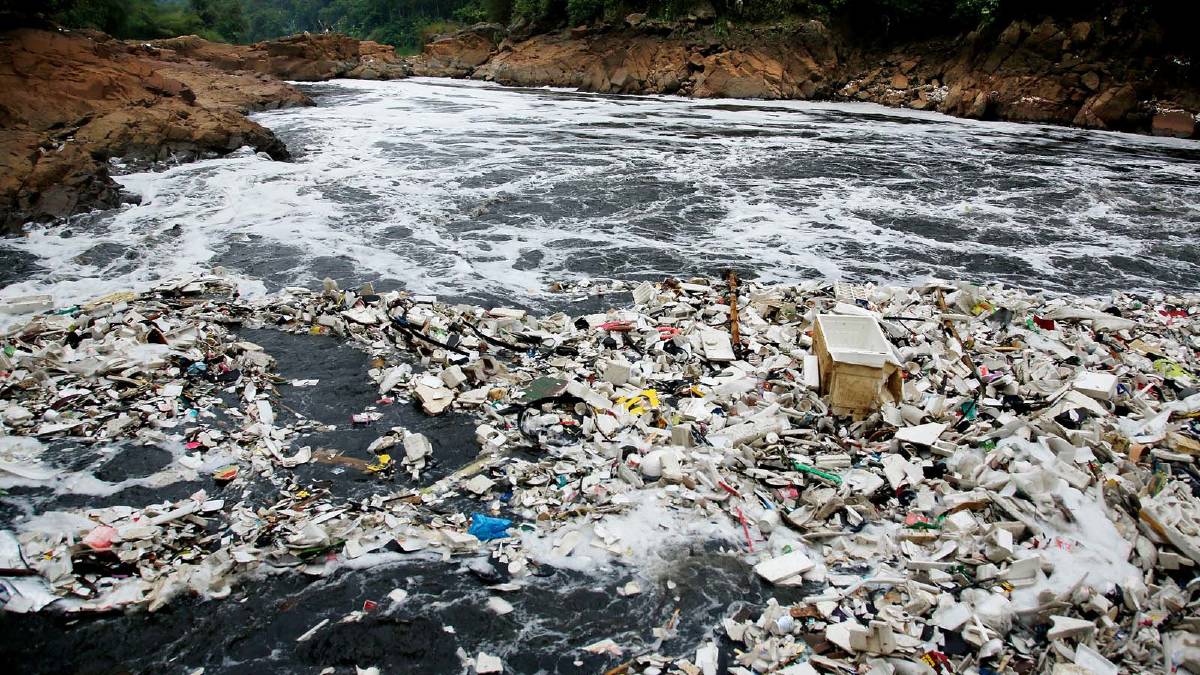Unravel the Health Effects of The World’s Dirtiest River—Citarum River, Indonesia
Bottles, cans, broken plastic, bits of smashed styrofoam, fabrics, metal appliance, and even dead corpses of animals can be seen floating along on the current. At the arc of the river, wastes would merged into stacks—making it tight and strong enough for someone to walk across to. The water itself is thick and black as the results of household’s sewages’, industrial wastes’, and agricultural excess’ dump. Yet so, it was not always like this on the Citarum—labeled as the most polluted stream in the world, Citarum River used to be a pristine water source full of fish until the late 1970s when Indonesia’s manufacturing sector began to emerge.
The Citarum River, a river that flows on the land of West Java Indonesia, is apparently the most polluted river in the world. Still, Citarum River remains to play a crucial role in the economic development of our people—with more than 15 million people living on the Citarum River relies on its water supply. The water remains to be a source of drinking water for the densely populated provinces of West Java and DKI Jakarta. There are many industries of textiles, chemicals, paper, metals, pharmaceuticals, food and beverage products surrounding this river. According to the West Java Environmental Management Agency, harmful industrial wastes disposed to the river has exceed the current established quality standard—shockingly, there are as many as 48% of these industries that have an average waste disposal 10 times exceeding the established quality standard.

Toxic Chemicals and Their Impact on Human Health
We learn that the main source of pollution of the Citarum River came from industrial and domestic wastes. This fact is highly upsetting because many of the elements, including heavy metals, can not be broken down and can accumulate in the food chain, causing harmful effects on living things.
Toxic chemicals can be classified based on their origin: (1) industrial including metals and non-metallic compounds, (2) agriculture such as synthetic and insecticide fertilizers, and (3) services & domestic materials (oil, detergent, and plastic). The upstream part of the river has a very high level of DDT, this is understandable due to many agricultural activities happening in this area. Pollutions on the downstream areas is, on the other hand, dominated by industrial waste disposal. A previous study conducted in Saguling Reservoir (1997) shows that in two species of fish commonly consumed by our people—the species tilapia and hampala—contained high concentration of heavy metals such as cadmium (Cd), copper (Cu), nickel (Ni), and lead (Pb).
Indeed, industrial waste contributes greatly to the current situation of the Citarum River. Data obtained from Indonesian Ministry of Industry (2012) shows that there are 1124 companies from 11 different industry sectors located surround the Citarum River Basin.

Health Impacts of the Toxic Compounds that lies within the Citarum River Water
Lead (Pb)—Human activities, including mining, industrial and burning of fossil fuels, have led to the buildup of this element in nature. Lead is highly toxic, thus its use in some products has been reduced. Symptoms and signs that arise from lead intoxication are usually abnormalities in the central nervous system and gastrointestinal tract. Lead intoxication can be acute or chronic. Symptoms of acute intoxication include loss of appetite, headache, hypertension, abdominal pain, renal dysfunction, fatigue, sleeplessness, arthritis, hallucinations and vertigo. This acute event generally occurs in work and industrial areas. Chronic intoxication can lead to mental retardation, defects in consciousness, psychosis, autism, allergies, dyslexia, weight loss, hyperactivity, paralysis, muscle weakness, brain damage, kidney damage and even death death.
Mercury (Hg) is reckoned to be the most toxic heavy metal in nature. Mercury intoxication is called acrodynia or pink disease. Mercury is released into nature through the activities of pharmaceutical, paper and pulp industries, as well as agriculture and soda production. Mercury can be found in nature in both organic and inorganic form. The organic mercury, due to its lipophilic nature, can easily penetrate into the cell membrane. This element can be found in fish. Micro-organisms will convert mercury into methyl mercury, a poison that can accumulate in the fish for a long time. The EPA has stated that methyl mercury and mercury chloride are highly carcinogenic compounds. The nervous system is highly sensitive to all types of mercury, and increase of exposure can cause disruption to brain function. Some of the symptoms and signs that may appear include tremor, memory impairment, irritability and impairment of vision and hearing. Exposure to inorganic mercury vapours can cause lung damage, vomiting, diarrhea, nausea, skin rashes, as well as increased heart rate or blood pressure; whereas organic mercury intoxication can cause symptoms of depression, memory disorders, tremor, fatigue, headache and hair loss.
Chromium (Cr) exists in several forms, but Cr (VI) and Cr (III) are the most commonly exposed to humans. Cr (VI) compounds are highly toxic and carcinogenic. Chromium comes from industrial work such as protective metal coatings, paint pigments, rubber, cement, paper, and leather tanning. When the damaged skin is exposed to chromium, wounds and ulcers may be formed. An ulcer on the nasal septum often occurs in workers exposed to this compound.
Iron (Fe) plays an irreplaceable role in supporting the life of living organism. Iron acts as a cofactor for many enzymes—meaning that they are required in many metabolism processes in our body, including respiratory processes. On the contrary, if appeared in the body in an inappropriate amount or a condition called as iron intoxication, iron can instead catalyse radical-forming reactions that can damage the biomolecules, cells, tissues and organisms themselves. Patient would initially experience gastrointestinal system disturbances such as vomiting and diarrhea, that would later may developed into shock, lethargy, tachycardia, liver necrosis, metabolic acidosis, with the last stage being the formation of ulcers in the gastrointestinal system. Death may occur in some cases. Iron overdose is a serious problem especially in developing and meat-eating countries. Studies shows that iron intoxication risks patient to develop cancer, as it is capable to damage DNA through DNA molecule oxidation processes.
Pathogens Living Beneath the Citarum River and its Impact on Health
Water-borne diseases—such as diarrhea and other gastrointestinal diseases caused by various bacteria, viruses and protozoans—are the cause of many outbreaks that occur worldwide. In developing countries, water-borne diseases are endured by millions of people. According to the WHO (2014), there are 3.4 million deaths occurring each year as a consequence of water-related illnesses—and most of them happens in children. Studies show that from all epidemic cases that happens in the United States occurring in the period of 1986 until 2000, 6.000 of them happened as a result of water-bourne diseases. More than 27% of the cases results from the infection of Shigella spp., while other etiologies include Cryptosporidium parvum, Adenovirus 3, Leptospira, Naegleria fowleri, E. coli, Schistosoma spp., Giarida, V. cholera and Salmonella.

Research had detect a high amount of Salmonella sp. colonies in the headwaters of Citarum. Yet there are no current data unveiling overall pathogen analysis of the water body of the Citarum River as a whole—further adding the need of future research.
Alessa Fahira
Indonesia One Health University Network
Communication and Networking Team
References
- Birry AA, Meutia H. Bahan Beracun Lepas Kendali, Sebuah potret pencemaran Bahan Kimia Berbahaya dan Beracun di Badan sungai serta beberapa titik pembuangan industry tak bertuan. Jawa Barat: Greenpeace Asia Tenggara dan Walhi. 2012.
- Jaishankar M, Tseten T, Anbalagan N, Mathew BB, Beeregowda KN. Toxicity, mechanism and health effects of some heavy metals. Interdisciplinary toxicology. 2014 Jun 1;7(2):60-72.
- Pandey PK, Kass PH, Soupir ML, Biswas S, Singh VP. Contamination of water resources by pathogenic bacteria. AMB Express. 2014 Dec 1;4(1):51.
- Andriani F, Ariesyady HD. Microbial Source Tracking Bakteri Salmonella sp. dan Escherichia coli dengan Metode Antibiotic Resistance Analysis di Sungai Citarum Hulu. Program Studi Teknik Lingkungan Fakultas Teknik Sipil dan Lingkungan, Institut Teknologi Bandung.
- Hasibuan S. The gargantuan task of cleaning Indonesia’s Citarum river [Internet]. Aljazeera.com. 2018 [cited 9 May 2018]. Available from: https://www.aljazeera.com/indepth/inpictures/gargantuan-task-cleaning-indonesias-citarum-river-180322063722627.html
The district receives $4,800 from the state for each student who completes academic writing service https://pro-academic-writers.com/ the school year.
